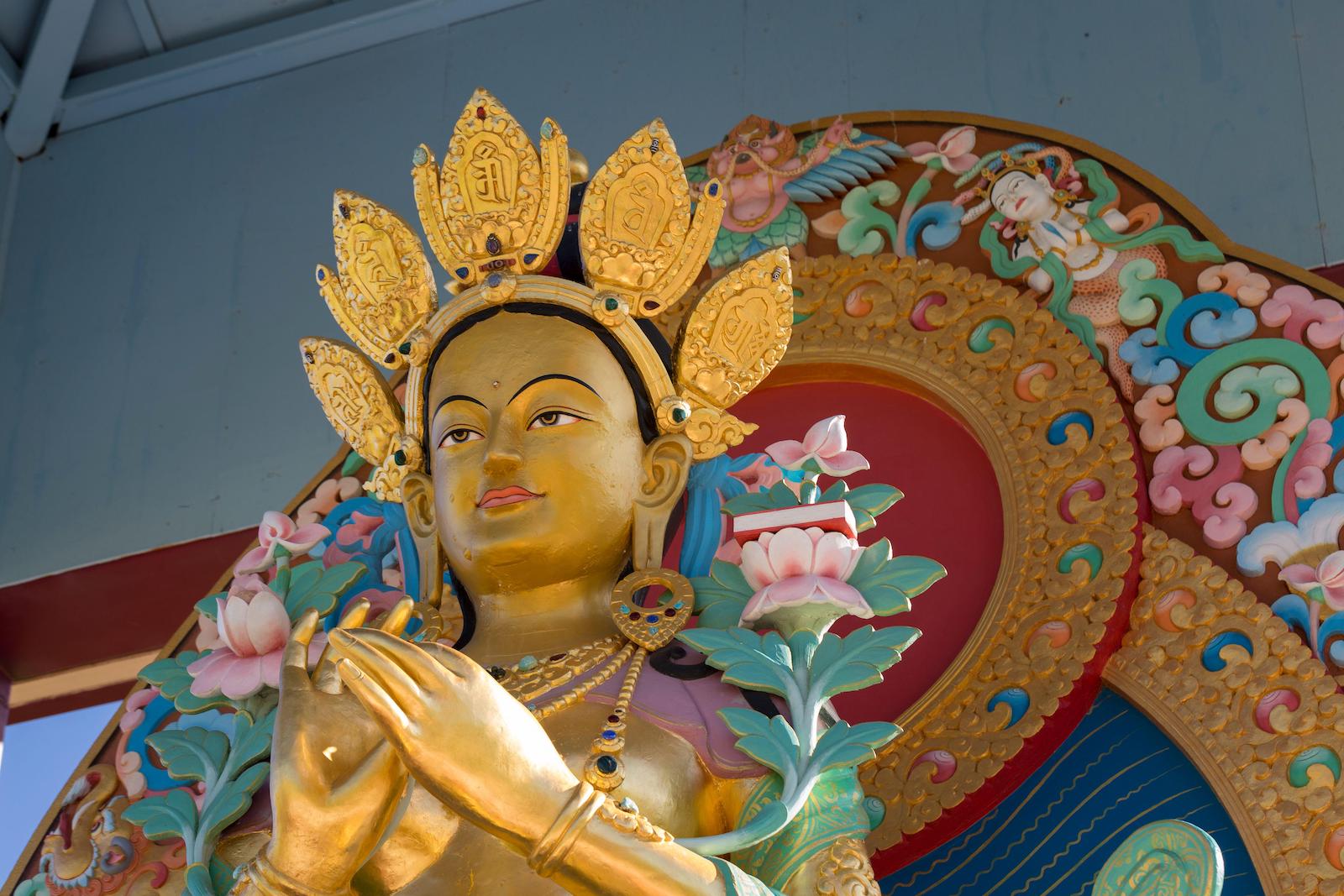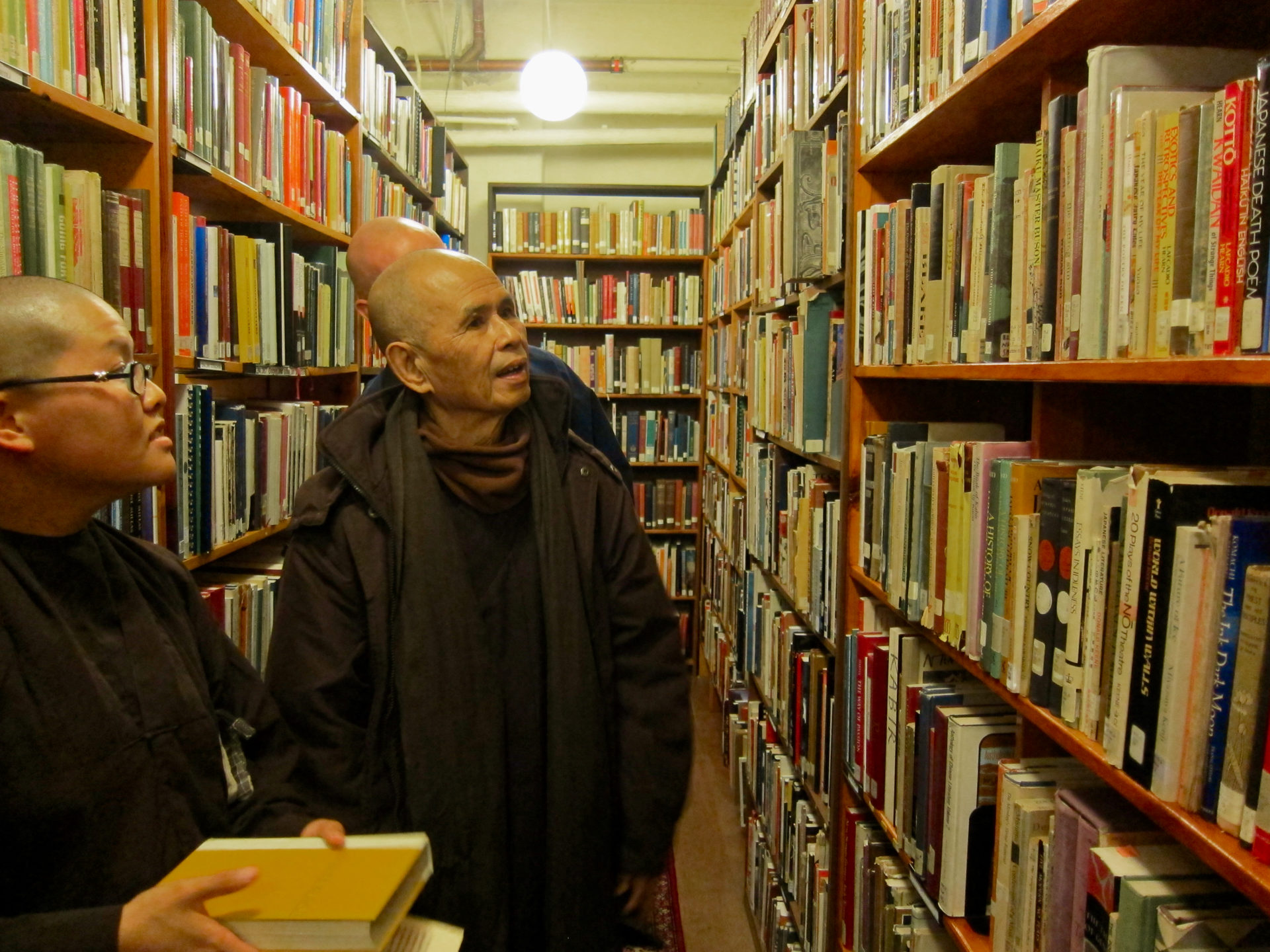A Meditation for Mother’s Day
The most generous thing we have to offer others is our true presence, and first we must be present with ourselves. The post A Meditation for Mother’s Day appeared first on Tricycle: The Buddhist Review.

 Statue of Yum Chenmo | Paul Christian Gordon / Alamy Stock Photo
Statue of Yum Chenmo | Paul Christian Gordon / Alamy Stock PhotoFrom the corner of almost midnight, huddled over my computer, quietly crunching my toddler’s favorite cereal from a brightly colored unbreakable bowl, I struggle to muster the eloquence to convey ultimate truths I’ve learned from wise teachers and Buddhist scripture. A mixture of perfectionism, pride, and true reverence keep me feeling the need to represent the dharma in a more formal way, and yet, the heart of the matter is here with me in my matronly sweatpants as I live and breath the chaos of every day, learning to weave my breath with nonjudgmental awareness—the mother of all Buddhas.
For many of us, our first taste of love came from our mother or from another caregiver. And for those of us who had this good fortune, this is how we learned what unconditional love and compassion is. Like the true affections of a great mother, our awareness is naturally loving, unconditionally compassionate, and nonjudgmental. Like a great mother, it stays with us always, no matter what happens in our lives.
Attention is the fabric of our awareness. Our ability to attend to or pay attention is the most resourceful and powerful faculty we have as human beings. But in our daily life, our attention process becomes judgmental. We become attached and fixated on our thoughts and feelings, avoidant of pain, and drawn toward pleasure. We become overly concerned with ourselves in a way that can make our world feel smaller. It’s very hard to be kind, helpful, or patient with others when you aren’t kind or patient with yourself. As a parent, I know this all too well. On the days I’m being rough with myself, I tend to be less patient with my kids, more reactive, and less present. One of my favorite quotes from Thich Nhat Hahn is, “When you love someone, you have to offer that person the best you have. The best thing we can offer another person is our true presence.” The most generous thing we have to offer others is our true presence, and we cannot even begin to make such a gesture without being present with ourselves.
The practice of tonglen can help us reverse the usual logic of avoiding suffering and seeking pleasure, and reduces the fixation on and clinging to our suffering as something inherently bad. Instead, we give suffering our loving attention and awareness—we give it our whole presence. This practice of taking and sending is one of the Seven Points of Mind Training developed by the Tibetan Kadampa master Chekawa Yeshe Dorje in the 12th century. Yeshe Dorje distilled the great 10th-century master Atisha’s 59 lojong slogans into seven practical methods of mind training that contain the essence of all 59 slogans. All of them are fundamental practices on the Mahayana path–through cultivating relative bodhicitta we can come to realize ultimate bodhicitta.
The purpose of this practice is twofold. It gives us practical means to take on our experiences on the path, whereby our suffering can become a source of compassion, wisdom, patience, and understanding for ourselves and others. This is relative bodhicitta. In the process, we can recognize the nature of our minds, or ultimate bodhicitta. In other words, relative bodhicitta is how we learn to love ourselves and each other. Ultimate bodhicitta is the fundamental pristine awareness, or nonjudgmental, naturally open, loving spaciousness undivided by self and other. Through the practice of tonglen, we are cultivating relative bodhicitta, and in doing so, we cultivate the ability to recognize the very awareness that allows us to love and hold space for ourselves and each other. The full understanding of this wisdom is known as prajnaparamita, the perfection of wisdom, and is also referred to in Tibetan as the deity Yum Chenmo, the great mother of all Buddhas.
In this practice, we breathe in the suffering of ourselves and others, visualized as a dark matter or smoke, and breathe out, sharing with ourselves and others a sense of joy and freedom from suffering. Although we may visualize and imagine various people and sensations in tonglen, the entire experience is held within our present awareness. Like a good mother tending to her children, we meet these expressions of mind with our unconditional loving presence.
When doing this meditation, people frequently say they feel bad or scared at the thought of taking on or breathing in the suffering of others. There is no harm in breathing in suffering or even imagining it; in fact in doing so, we are welcoming our experience by giving our direct attention generously and without judgment.
The reason the practice begins with resting in spacious awareness is to gently remind us that that is where the present moment is. There is nothing that our unimpeded awareness cannot hold. It is also helpful to simply return our attention and focus to our natural breath if ever this visualization gets to be too much.
***
Tonglen Meditation Instructions
Now start to work with different textures and sensations. Breathe in a feeling of dark, smoky, heavy energy and breathe out a feeling of cool, bright, light, uplifted energy. Breathe these sensations in and out completely through your pores. Now move onto a personal situation, a painful situation that is real to your experience. Breathe into that feeling of tension, welcome it into your body in the form of dark smokey light, inviting your spacious awareness to hold it lovingly.
As you exhale, imagine that dark smokey energy transforms into white light, and envision this light giving you joy, wisdom, happiness, and freedom from pain; imagine this light giving you unconditional, non judgemental love and spaciousness. Next try breathing in the pain of someone else you love and care about, taking on their suffering and sending them your joy and freedom from pain. Finally, make the taking and sending bigger. If you are doing tonglen for someone you love, extend that to others who may be in the same or similar situation as your friend or loved one. Imagining others experiencing pain, fear and suffering, continue taking it on, and sharing your joy and freedom from pain. Until finally you can have the space to imagine your enemies or someone who you feel negative energy toward; give yourself the courage and spaciousness and generosity to do tonglen for them and all beings you can imagine. Imagining an infinite, vast ocean of people, gradually drop the visualization and rest in open, spacious awareness once more.
May all beings be free from pain and recognize the innate loving wisdom awareness that is our very nature.
And in the meantime, may we at least learn to love ourselves and each other in the process.

Get Daily Dharma in your email
Start your day with a fresh perspective

Explore timeless teachings through modern methods.
With Stephen Batchelor, Sharon Salzberg, Andrew Olendzki, and more
![]()
Thank you for subscribing to Tricycle! As a nonprofit, we depend on readers like you to keep Buddhist teachings and practices widely available.
This article is only for Subscribers!
Subscribe now to read this article and get immediate access to everything else.
Already a subscriber? Log in.

 UsenB
UsenB 































